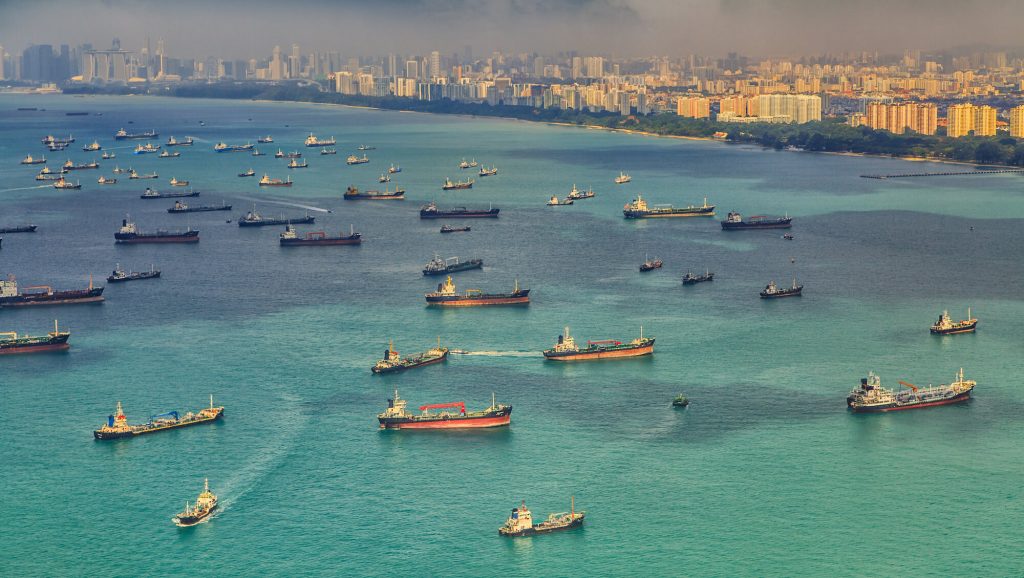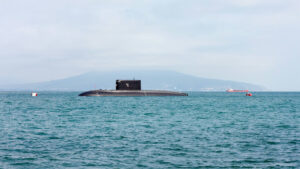The “Coronavirus Guides” is an ongoing series. The guides act as primer documents on wide-ranging topics. Please follow the links to see the Introduction, The Epidemic Guide (America and Europe Edition), The Europe Guide, The Finance Guide and The Developing World Guide.
To find out more about Peter’s consulting services, please visit Zeihan.com/consulting.
As a rule I try to stay out of discussions about energy prices. Energy trading is a hectic business with a lot of stress, plagued by fleets of hot-headed issues that have nothing to do with supply or demand or technology. But that’s not the problem today. The problem today is the world is at the beginning of its sharpest economic downturn since the 1920s while the world’s largest oil exporter has launched a rage-driven price war. The end result is pretty straightforward:
Oil prices are going to, and through, zero. Sometime soon, probably before the end of May, oil prices will be negative. Pretty much everywhere.
Let’s begin with demand.
When coronavirus took parts of China’s economy offline in February, the country’s oil demand likely dropped by 3-4 million barrels per day (mbpd). As China has come back on-line some of that demand has regenerated, but it has been more than overwhelmed by the rest of the world descending into lockdown. With some 250 million Americans under some degree of stay-at-home order, US gasoline demand today is down by nearly two-thirds. Transport fuels account for about two-thirds of US oil demand, so that’s a headline reduction in oil demand of ~9mbpd.
From just one sector. In just one country.
Similar contractions in fuel demand have occurred in other locations where the virus has forced populations into cloister. And while not strictly petroleum-related, most locations under lock down appear to see electricity demand drop by one-third to one-half based on their industrial make up. The demand crunch isn’t just for raw oil, but for refined products as well. Throughout the world, refiners are either spinning their facilities down to the absolute minimum they can manage without shutting them down completely, shutting them down completely, or attempting to sell cargoes they’ve previously purchased to others rather than take actual delivery.
All told, as of March 31, the total decline in global oil demand appeared to be at least 15mbpd out of a pre-virus total of about 100mbpd. Even if the decline is “only” 15mbpd, this is the largest decline in demand in both absolute and relative terms in the history of petroleum, and it all occurred in under three months (with the bulk of it in less than three weeks).
Which means the price drops we’ve seen so far are just the beginning. First, coronavirus only really shut down the U.S. and European economies last week. Second, meaningful economic contractions in India and South Africa are only happening now. Third, Japan, Mexico, Brazil and Indonesia have yet to enact meaningful social distancing. Demand has a lot further to fall. Penciling in a total demand decline of 25mpbd seems eminently reasonable. Maybe even a touch conservative.
And demand will stay down. Assuming you believe Chinese data and propaganda, a return from quarantine takes about two to three months. That suggests – assuming zero collateral economic damage – that the world should not expect a large-scale increase in oil demand to begin until at least June. And even then there would be a ramp up period. (Any volunteers to be the first person back on a plane?) And as I discussed in the Epidemiology Guide, three months offline may well just be the beginning.
So that’s demand. Now let’s talk supply.
The bottom line is that the Saudis are pissed.
Saudi Arabia has been the world’s largest oil exporter for decades, and for the past 47 years the Saudis have led most of the world’s major oil exporters – first within and then beyond OPEC – in regulating the global supply of crude oil. In recent years the player who has most mattered, and most vexed the Saudis, is Russia: the world’s second-largest net crude oil and second-largest refined product exporter.
The fiction is that the Russians cooperate. In reality, due to reasons climatic, geologic and geopolitical, the Russians have never once actually reduced output. The most Moscow has ever done is claim to cooperate and maybe do a touch extra seasonal maintenance, while then reaping the benefits of Saudi reductions. The Saudis know it, but getting the Russians to at least say they are cooperating holds some value in the emotion-driven world of oil trading.
When conoravirus reduced Chinese demand in February, the Saudis realized prices were going to suffer and so sought to build another broad alliance to reduce output. Everyone signed on. Everyone, that is, except the Russians. In fact, this time the Russians refused to even make an empty promise (because they had plans to bring more crude to market). So the Saudis scrapped the deal with everyone else, declared a price war in a huff, started bringing their spare production on-line, and started exploring their mothballed oilfields to see just how much oil they could dump on the market. That effort increased their exports by over 1mbpd during March, will increase them by an additional 2mpd by the end of May, with the possibility of at least that much again throughout the rest of the year.
There’s also a new factor in the mix: personality. Saudi Crown Prince Mohammad bin Salman (MBS) is the Kingdom’s new leader, having only been holding the reins about three years. Bit by bit he has been remaking the kingdom and its policies in his own image. His formative leadership years are occurring during the American withdrawal from the Middle East, and so he has come to the (correct) conclusion that Riyadh is going to have to look after its own interests more directly. That means more aggressive stances in places like Iraq and Syria and Yemen…and in oil markets. He is bold and brash and inexperienced and he doesn’t see the old way of negotiating collective oil production declines as working. He has a point.
So who wins this?
The Russians have about $560 billion dollars in financial reserves, but most of it is not in US dollars. With the US dollar likely to go up during coronavirus while everything else goes down, the Russians are likely to at least in part regret their decade-old anti-US financial campaign. Perhaps the biggest thing the Russians have going for them is that most Russians consider privation and suffering to be points of national pride. The Russians have to hurt, really hurt, before they’d even consider giving in.
Saudi Arabia’s formal reserves are nearly as large as Russia’s ($500 billion) but Riyadh has access to other funds that are probably worth three times that. And from time to time MBS likes to liquidate this or that prince from the branches of the family that used to have the run of the Kingdom, and take all their stuff. The Saudi royal family literally has hundreds of thousands of princes, so there’s a lot of financial heft just laying around for emergencies like this one.
On April 2, the Saudis indicated they’d like to host another OPEC+ summit with intent of making emergency oil production cuts on a global scale. Consider what the scale of “success” would be. The largest cut OPEC+ has ever made was less than 3mbpd, with the Saudis shouldering half the burden. It’d take a cut (at least) five times that to stop the downward spiral. It is difficult to see the Saudis even considering such unless the Russians don’t simply put some skin in the game, but also pre-commit a couple non-disposable limbs.
So that’s demand and supply. Here’s the time-frame:
With coronavirus gutting economic activity, refiners the world over are for now putting their extra product into storage, but they are running out of space. Governments and refiners both are taking advantage of low oil prices to top off their stored oil reserves, but they are running out of space.
And the crude keeps coming. There are hundreds of millions of barrels of crude on tankers that have left the Persian Gulf and West Africa but have not yet made it to their customers because it often takes up to a month of sailing for Persian Gulf oil to reach a customer. There’s a whole wave of oversupply shocks that will hit and keep hitting every single day for weeks to come.
At the beginning of the crisis total global spare storage capacity was likely about 1 billion barrels. Back of envelope math suggests all storage everywhere will be filled to brim sometime around mid-to-late May, again, assuming the demand decline does not increase above 15mpbd. If the true figure is 25mpd, we hit the wall a 2-3 weeks earlier. And when that happens prices go firmly negative.

So that’s demand and supply and time-frame. Here’s the battlefield:
Not all oil is created equal, and I’m not referring to the differences in viscosity and contaminants (light and heavy and sweet and sour for those of you who don’t eat and breathe the oil sector). Instead I’m referring to location. Much of the angst in the oil sector is getting oil from the wellhead to some sort of demand location, typically a refinery or petrochemical facility.
In terms of global shipments there are really only two ways of moving a lot of crude: by tanker or by pipe. The difference between the two determines how long a producer can hang on in the current, rapidly deteriorating, price environment.
The disadvantage lies with the producers who rely upon pipelines. When demand and storage facilities down-pipeline become maxed out, that’s…it. The pipeline backs up and up-pipeline producers have no choice but to shut-in their production. (There may be some minor shipping via truck or rail, but those options cost more per barrel than pipe and typically first require some new loading infrastructure.)
Shipments via tanker have more flexibility. Ocean-going supertankers can sail to any appropriate port in the world and interface with any coastal demand facility. If one port is full-up, the tanker can just sail to the next.
The Saudis enjoy the second-lowest day-to-day production and second-lowest full-cycle costs in the world (only Kuwaiti oil is cheaper to produce). In addition, all the oil they send to market is via tanker. All else being equal, the Saudis will be the last men standing.
In contrast, the Russians have a mixed system. At the point of the Soviet collapse nearly all Soviet crude was shipped by pipe. But under the leadership of President/Strongman Vladimir Putin the Russians have built out pipe systems that terminate in ports on the Baltic Sea, Black Sea, and Sea of Japan. However, not only are all those seas constrained, none of the ports are capable of supporting supertanker loading. All are either for supporting regional markets, or need shuttle tankers need to bring their product to a larger (non-Russian) ports for reloading onto larger vessels. Collectively, these Russian ports can theoretically push out nearly 4mpbd (although they have never operated at full nameplate capacity).
The Saudi game plan is pretty direct. Dump nearly unlimited volumes of crude oil into markets where Russia’s pipe network terminates in order to a) undercut the Russians in what the Russians think of as captive markets, and b) preemptively fill up any available storage capacity in those markets or any nearby transshipment nodes so the Russians have nowhere to sell their crude.
Should the strategy work, the Russians will have no choice but to turn off their pipelines as well as a fair amount of their port capacity, locking in the vast bulk of their 5.5mbpd of crude exports as well as a painful chunk of their 3.6mbpd of refined product sales. The focused dumping is designed to force negative prices and in the markets Russia serves before negative pricing hits everywhere else. That would make Russia the first and most obvious casualty in the price war. Riyadh could then turn its attention to other oil producers for whom it holds slightly less…aggressive feelings.
US shale certainly falls into that bucket, although the rules for US shale are a bit different than for more conventional oil fields. While all US shale oil relies upon pipes to take it to market, those pipes are linked to port loading capacity which enable some 7mbpd of export by tanker. In addition, the nature of shale oil is that it isn’t pumped; natural pressure in the rock formation pushes the oil up and out. Lifting costs are minuscule, and much of their daily operating costs come down to pipeline rates. Shutting-in crude under current circumstances may incur higher costs than simply letting things run.
This is both better and worse than it sounds.
Worse in that most shale operators are small firms. In some parts of Texas, the crude overload is already so bad that shale oil is selling for only $7, below the operations costs for most everyone. For small firms, a year with low-to-zero-to-negative income is more than enough to gut them and offer them up to the supermajors as acquisition targets.
But it is better in that a shale well’s output declines rather quickly compared to more conventional oil production methods, so for the most part the output loss the sector will suffer represents natural well depletion rather than any conscious effort to shut-in production. Back of envelope math suggests the sector as a whole is eyeing a 2mbpd decline for the year.
Moreover, it isn’t as if the shale techs are going to be un-invented. The entire production process from drilling to first flow for an American shale well occurs in less than six weeks. Traditional oil fields take months simply to bring mothballed production back on-line, much less new production. Output increases for big offshore projects take years. Once the market rebounds US shale will be the first oil to return in force.
But back to the main event: The real kicker is even if all Russian piped exports goes offline and the Russians’ own viral epidemic reduces their domestic oil demand by half, that still wouldn’t be half of what was needed to bring the global oil market back into balance. Make no mistake, negative pricing is only the beginning of the producer reckoning that the Saudis and coronavirus have kicked off. Collateral damage will be everywhere.
Zeihan on Geopolitics has selected the energy sector to be the first of our sector-by-sector teleconference topics. Scheduled for Friday, April 10 the event will play through the logic and outcomes of the Saudi strategy, with an emphasis on which energy producers will vanish from the market, in what order, and on what time-frame.
Future planned invents include:
- The Unmaking of the Global Economy (April 6)
- The Shattering of Global Oil (April 10)
- Agriculture
- Transport and Supply Chains
- Manufacturing
- Industrial Commodities








